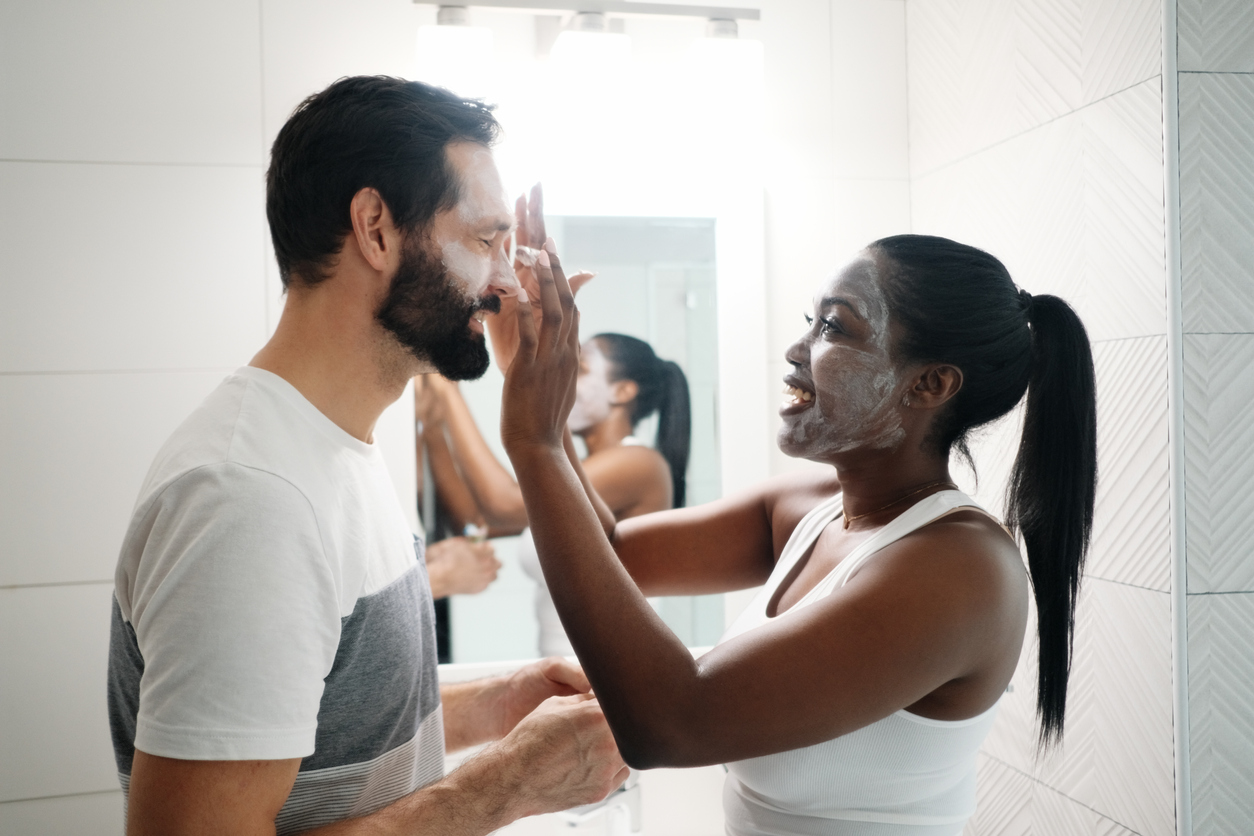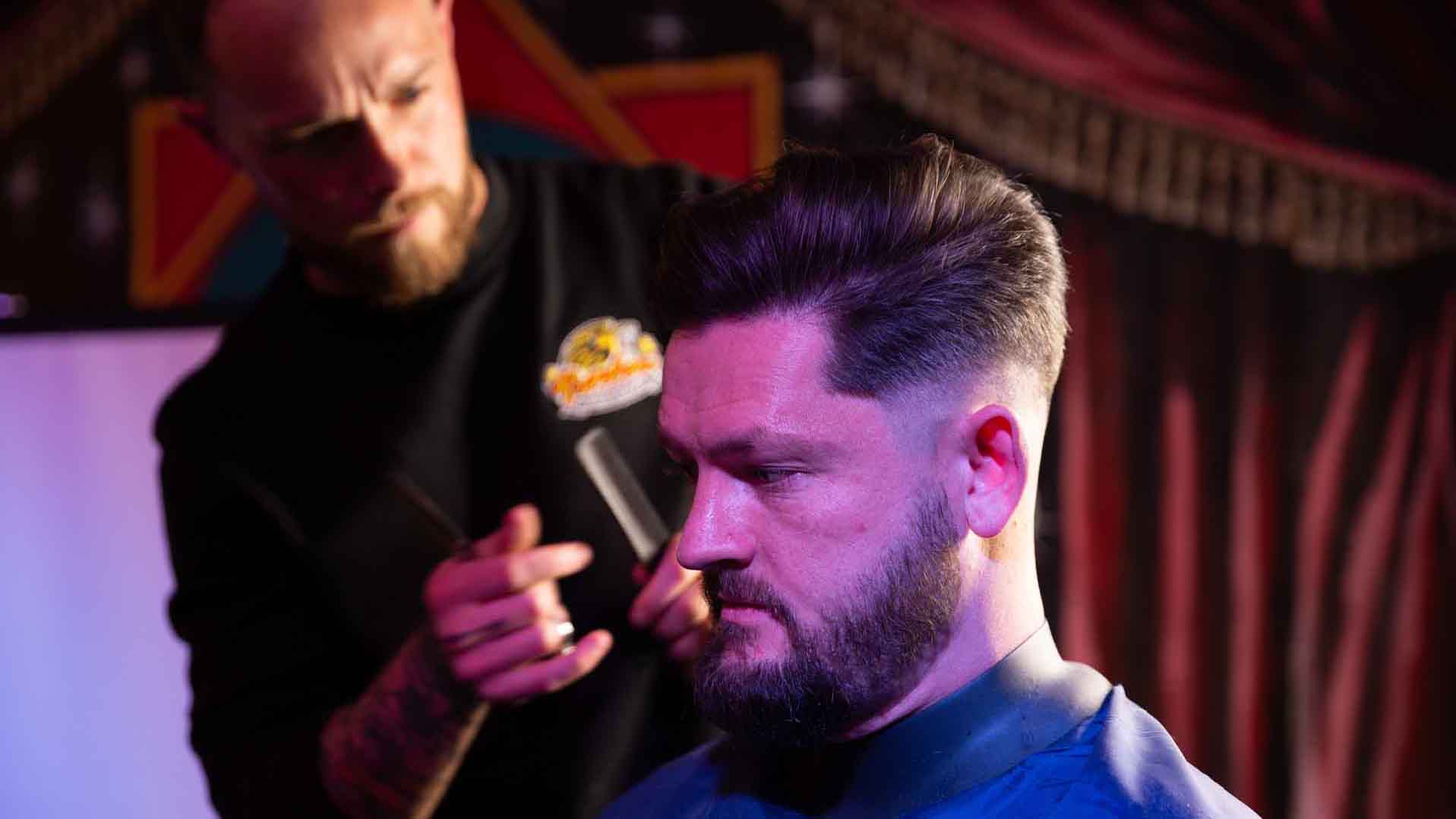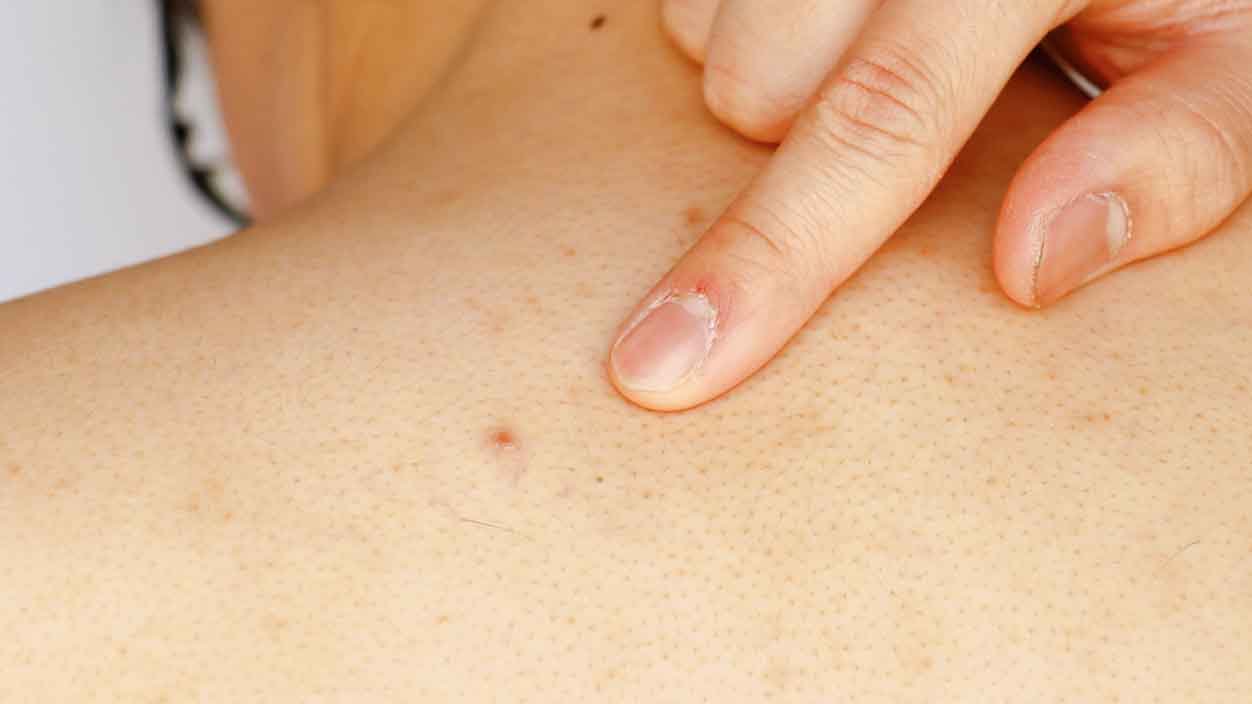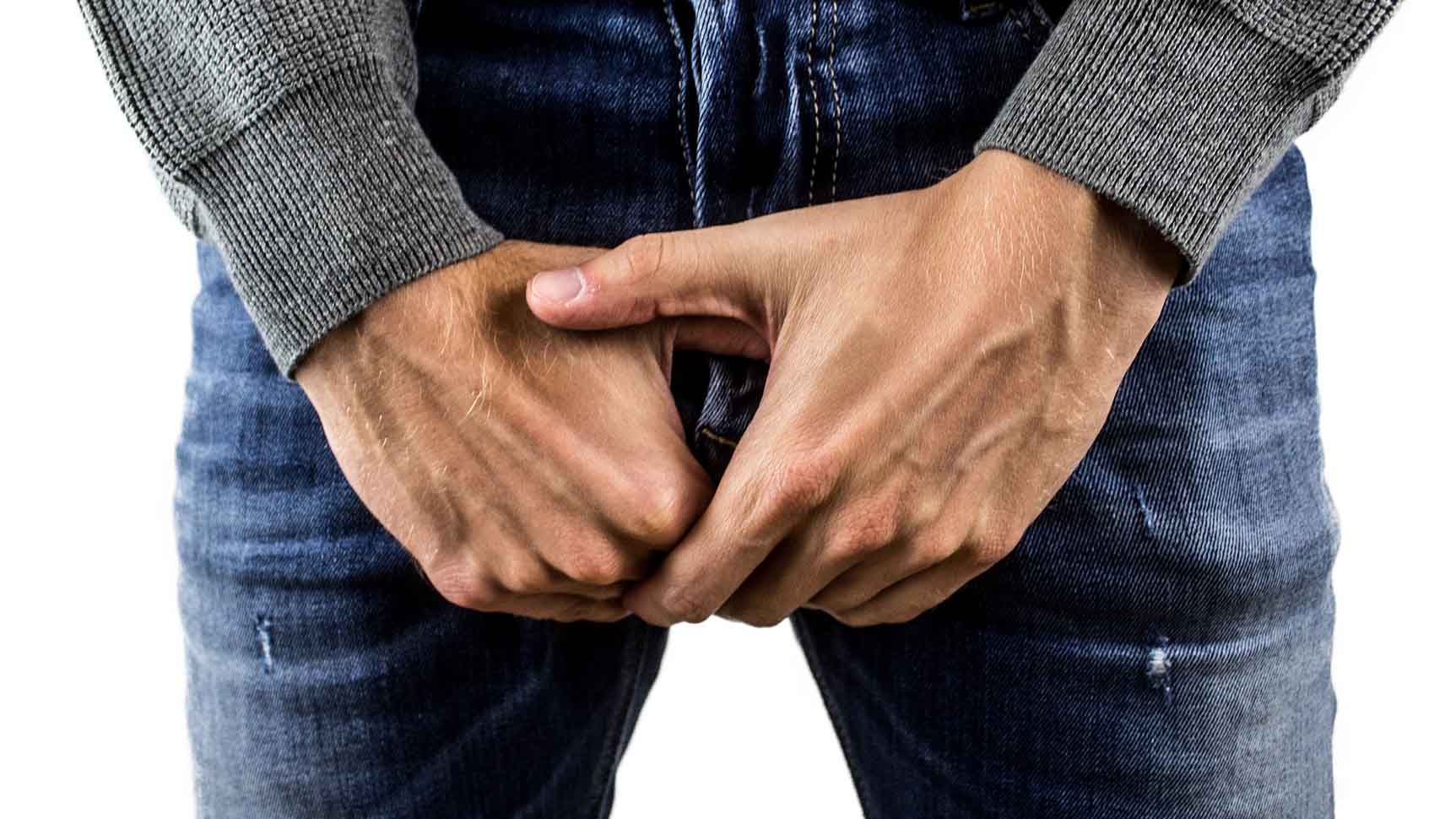
How to check your balls for signs of testicular cancer: Step-by-step guide helps you look for lumps
If you’re worried about a lump on your testicle, or you want to know how to check for signs of testicular cancer, this expert guide should hopefully help
T esticular cancer is one of the most common forms of cancer in young men, but it’s also 98% curable if it’s caught, and treated early.
This is why The Robin Cancer Trust is urging men to check their balls aid of Testicular Cancer Awareness Month this April. The Robin Cancer Trust was founded by Toby Freeman after losing his brother Robin to the disease. Robin was just 24 at the time of his death. In a bid to prevent other families from having to go through the same heartache, Toby, and the trust, have shared a quick and easy five-step guide to self-exams.
As part of the charity’s mission to raise awareness of the signs of testicular cancer, the charity broke the world record on Saturday 3 April 2021 for “the largest simultaneous self-check for testicular cancer” with more than 240 men checking themselves live on Zoom.
Since 2012, The Robin Cancer Trust has reached 12 million people online, engaged with more than 175,000 men and women in the community, and delivered educational talks to 25,000 young adults in schools, colleges and businesses.
Robin was diagnosed in 2011 with a rare form of testicular cancer; a Mediastinal Germ Cell Tumour (a grapefruit-sized tumour in his chest). Following 10 months in treatment, including several rounds of chemotherapy and a stem-cell transplant, he passed away on 10 December 2011.
Below we explain how to check for testicular cancer, what the signs of testicular cancer include and what to do if you’re worried.
Signs of testicular cancer
Before we explain how to check for testicular cancer, we should probably explain what kinds of things you should be looking for.
SIGNS AND SYMPTOMS OF TESTICULAR CANCER
Testicular cancer symptoms typically include a swelling or lump – the size of a pea or bigger – in one of the testicles.
Other symptoms include:
- Increase in firmness
- Change in appearance
- Aches and sharp pains
- Heaviness in your scrotum
Source: NHS
According to the NHS, testicular cancer symptoms typically include a swelling or lump in one of the testicles. This lump is usually painless and can be as small as the size of a pea, or larger.
You should also be looking for any changes in texture, firmness and shape. If you’re checking your testicles for signs of testicular cancer regularly, the more familiar you’ll be with the size and shape of your balls. This makes it easier to establish if there have been any changes.
Other signs of testicular cancer can also be an increase in the firmness of a testicle, a difference in appearance between one testicle and the other, aching testicles with a sharp pain that comes and goes, and the feeling of heaviness in your scrotum.
If you do find a lump or swelling, or you’re worried about any changes, make sure you see a GP, or you can go to a local sexual health clinic for free. Do not ignore them.
Only a small minority of scrotal lumps or swellings are cancerous and despite being one of the most common among young men, testicular cancer itself is rare. Especially compared to other cancers and conditions.
Other reasons for swelling and lumps include swollen blood vessels, cysts in the tubes around the testicle, or swelling caused by an injury.
If you see a doctor and they determine that you do have testicular cancer, the sooner treatment begins, the better. Don’t put off seeing the doctor and dismiss the changes.
How to check for testicular cancer
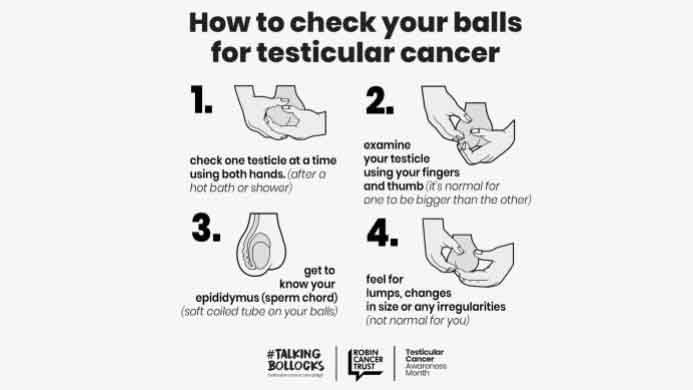 The Robin Cancer Trust
The Robin Cancer Trust
Step One: Check your balls during or after a hot shower
The best time to check your balls for signs of testicular cancer, lumps or any changes is during or just after a hot bath or shower. Making sure you check your testicles one at a time using both hands
Step Two: Use your fingers and thumb to check for signs of testicular cancer
Firmly but gently examine your testicle using your fingers and thumb. They should be roughly an even size and smooth to touch, though it’s normal for one to hang slightly lower or be slightly bigger
Step Three: Check your Epididymis
Get to know your Epididymis (the tube that carries sperm), it feels like a soft coiled tube on your testicle
Step Four: Look for lumps, swelling or changes
Feel for any signs and symptoms of testicular cancer. If you feel any lumps, swelling, changes in size, pain or hardness, make an appointment with your doctor as soon as possible
Step Five: Repeat
Repeat every month. Nine out of ten men are cured if the cancer is caught early
MORE LIKE THIS

Subscribe to the MBman newsletter to stay updated
Feature picture credit: Image by Darko Djurin from Pixabay






